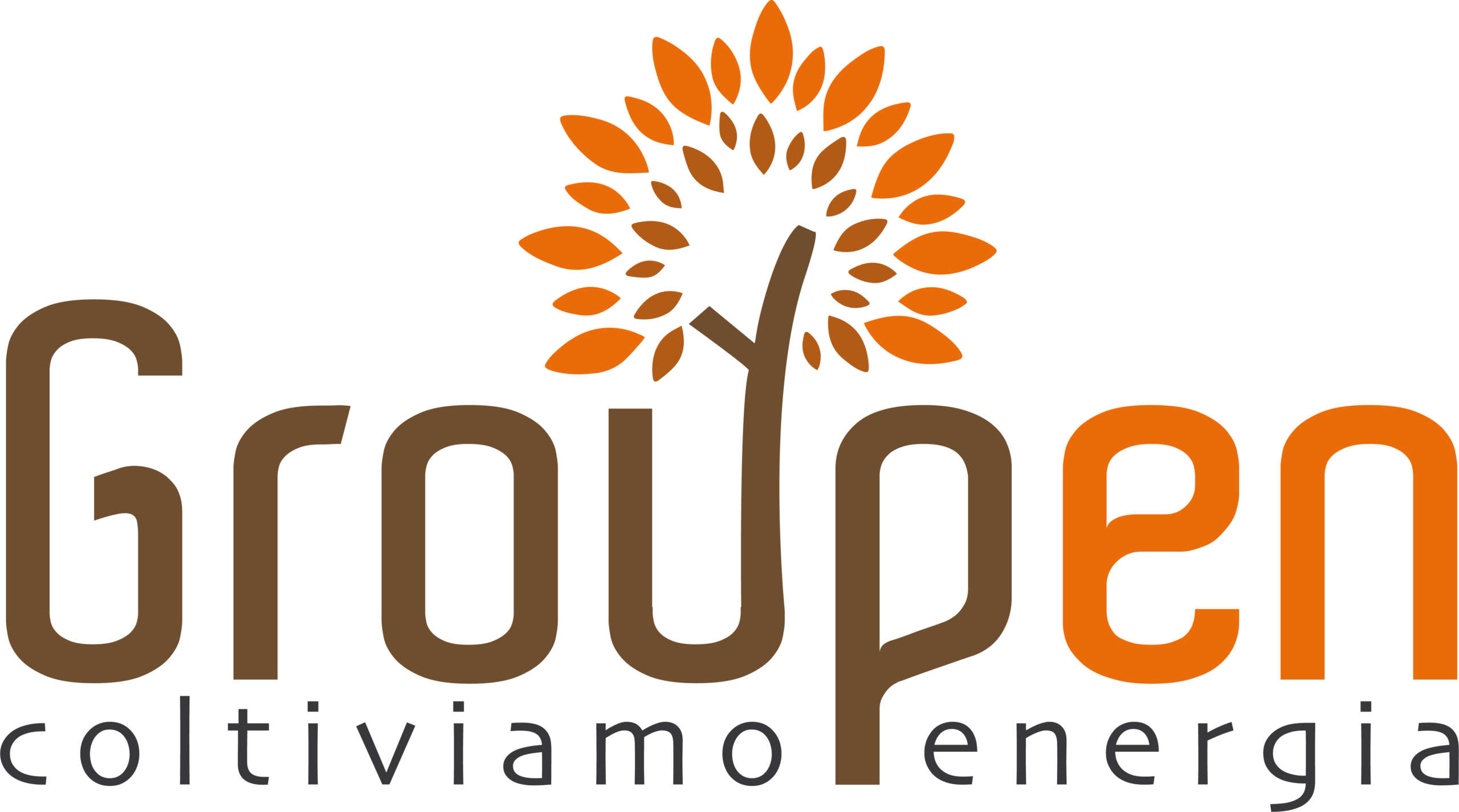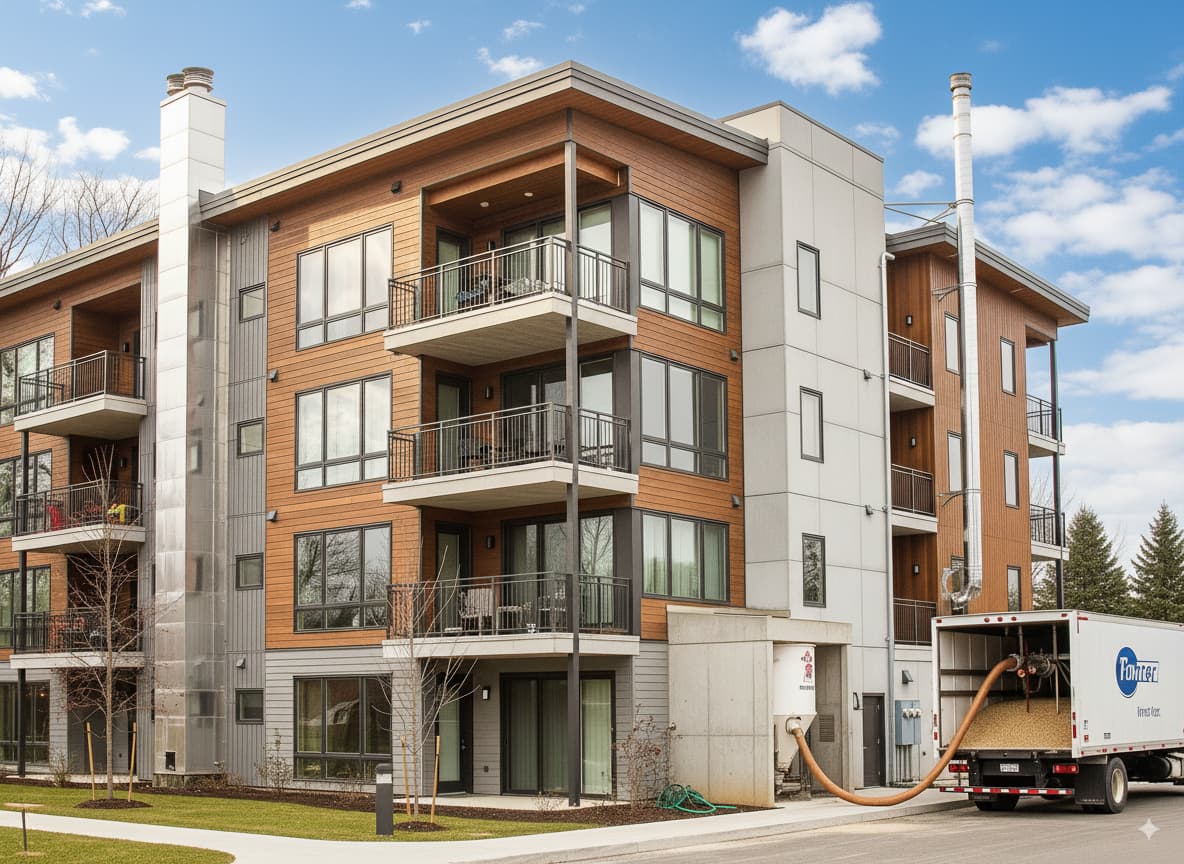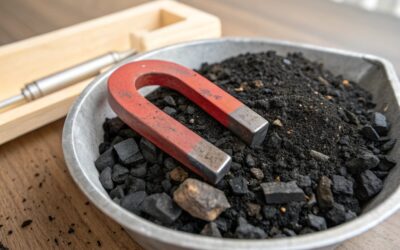In recent years, the topic of energy efficiency in condominiums has become central, driven both by the rising cost of fossil fuels and new European sustainability directives. One of the most innovative and advantageous solutions is collective pellet heating , a system that combines the cost-effectiveness of a renewable energy source with the convenience of centralized management.
In this article, we analyze how it works, what its advantages are compared to traditional boilers, and why it could represent a strategic choice for condominiums of the future.
What is a pellet condominium system?
A centralized pellet heating system replaces the old diesel or methane-fired condominium boiler with a multi-fuel or pellet-specific boiler , connected to an internal distribution network.
The pellets—derived from compressed sawdust and wood processing waste—are stored in shared silos and automatically feed the boiler, ensuring continuous service. Modern systems allow for fully digital management, with sensors and remote controls, minimizing manual intervention.
Advantages of pellet heating in condominiums
1. Economic savings
Pellet prices are generally more stable and competitive compared to fossil fuels. A condominium can reduce heating costs by 20% to 40% compared to diesel.
2. Environmental sustainability
Pellets are a renewable energy source with low CO₂ emissions. Using pellets reduces your building’s carbon footprint, contributing to European decarbonization goals.
3. Energy independence
A condominium silo allows you to store supplies for weeks, reducing your dependence on energy market fluctuations.
4. Incentives and deductions
In Italy, several tax incentives (Ecobonus, Conto Termico) are available that significantly reduce initial installation costs.
Pellet system: how it works in practice
- Storage silos : can be underground or above ground, sized for the condominium population.
- Feeding system : augers or pneumatic aspirators transfer the pellets to the boiler.
- Centralized boiler : automatically regulates combustion and heat production.
- Distribution : the hot water circulates in the radiators or existing radiant systems.
- Individual metering : Modern systems allow for precise monitoring of each apartment’s consumption, so each condominium owner only pays for what they consume.
Installation costs and return on investment
A pellet heating system for a condominium requires an initial investment ranging from €30,000 to €100,000 , depending on the size of the building. However, thanks to energy savings and government incentives, the average payback is between 5 and 8 years .
Many administrators choose energy service contract formulas , in which the installation company manages the system and maintenance, spreading the costs over time.
Challenges and aspects to consider
- Space available for the silo.
- Logistics management of pellet supplies.
- Annual maintenance and ash cleaning.
- Involvement of the condominium owners , who must approve the transfer with a specific assembly resolution.
Because it represents “collective heating 2.0”
Pellet heating for condominiums is not just a technical alternative, but a real paradigm shift :
- integrates digital technology (remote control and smart accounting),
- reduces energy costs,
- enhances real estate assets,
- contributes to urban sustainability goals.
It is a forward-looking solution, combining innovation, convenience and respect for the environment .
Conclusion
The pellet-fired condominium model is becoming increasingly popular in Italy and Europe, especially in medium- to large-scale residential contexts. It represents a concrete response to the need to reduce costs, increase efficiency, and respect the environment.
If you are considering a new condominium system, pellets could really be the key to entering the era of collective heating 2.0 .
Frequently Asked Questions (FAQ) about pellet-fired condominiums
How long does a pellet heating system last?
A well-designed and maintained pellet system can last an average of 15-20 years . The boiler requires annual maintenance, while the silos and feed systems require periodic checks to ensure efficiency and safety.
What incentives are available in 2025 for pellet-fired condominiums?
In 2025, several tools remain active:
- Conto Termico 2.0 , which covers up to 65% of eligible expenses ;
- Renovation bonus (50% tax deduction over 10 years);
- In some cases, regional calls for energy transition.
It’s advisable to check with your administrator or a knowledgeable technician to determine the most cost-effective combination.
How many pellets does a condominium need?
Consumption varies depending on the building’s insulation and the number of apartments. On average, a 20-unit apartment building requires about 25-35 tons of pellets per year . A large silo allows for arranging supplies with just a few annual refills.
Are pellets more convenient than methane?
Yes, especially in large apartment buildings: the cost per kWh of heat for pellets is lower than for natural gas, and prices tend to be more stable over time. Furthermore, pellet boilers have an efficiency that can exceed 90% .
Does a lot of space need to install a pellet heating system in a condominium?
Yes, but it’s manageable: you need to plan a boiler room and an area for the storage silo. Alternatively, modular or underground silos can be installed to optimize available space.
Does each apartment pay based on actual consumption?
Thanks to heat metering systems , each condominium owner receives a personalized bill, proportionate to their actual consumption. This avoids flat-rate splits and encourages more responsible heating use.







